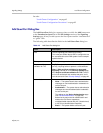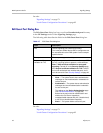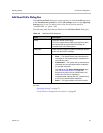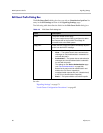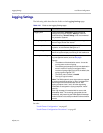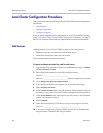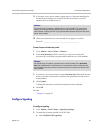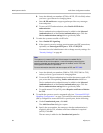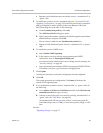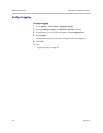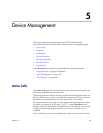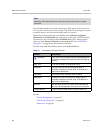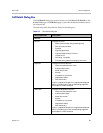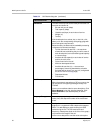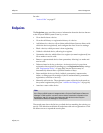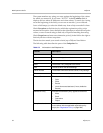
Local Cluster Configuration Procedures Local Cluster Configuration
Polycom, Inc. 85
c Repeat for each additional port on which to receive “unauthorized” or
“guest” calls.
5 To enable the system to receive untrusted calls (see “Untrusted SIP Call
Handling Configuration” on page 73) from SIP session border controllers
(SBCs) configured to add a specific prefix in the Request-URI of the
INVITE message for such calls, do the following:
a Under Unauthorized prefixes, click Add.
The Add Guest Prefix dialog box opens.
b Specify the prefix number, whether it should be stripped, and whether
authentication is required. Click OK.
The new entry is added to the Unauthorized prefixes list.
c Repeat for each additional prefix used for “unauthorized” or “guest”
calls.
6 To enable the system’s XMPP server:
a Select Enable XMPP signaling.
b If the system’s security settings permit unencrypted XMPP
connections, turn on Unencrypted XMPP port.
You must have the Administrator role to change security settings. See
“Security Settings” on page 48.
c Leave the default port numbers (5222 for unencrypted XMPP, 5223 for
TLS) unless you have a good reason for changing them.
7 Click Update.
A dialog box informs you that the configuration has been updated.
8 Click OK.
The system processes the configuration. The Status field shows the
current H.323 signaling state.
9 If you enabled the system to receive “unauthorized” or “guest” calls, do
the following:
a Go to Admin > Call Server > Dial Rules and click in the Dial rules for
unauthorized calls list to give it focus.
b Add one or more dial rules to be used for routing “unauthorized” or
“guest” calls. See “Dial Rules” on page 243.
An unauthorized call rule can route calls to a conference room ID
(virtual meeting room, or VMR), a virtual entry queue (VEQ), or a SIP
peer.
See also:
“Signaling Settings” on page 71



